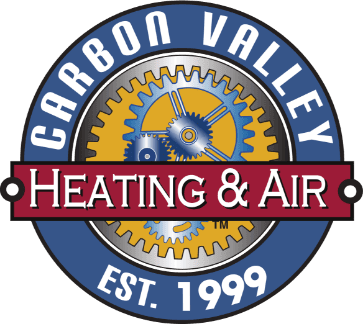Swamp Coolers vs. Air Conditioners in Longmont, CO

As the temperatures rise in Colorado, homeowners and small business owners are thinking about one thing: staying cool!
If you are considering a new cooling system, you may be surprised to learn that you have more than one option for your Longmont, CO, home or business. At Carbon Valley Heating & Air, our expert team can help you weigh the pros and cons of two types of cooling: refrigerant and evaporative.
According to the U.S. Energy Information Administration (EIA), central air conditioning remains the primary cooling equipment for nearly 90 percent of the homes in the U.S. Approximately 2 percent stay comfortable with swamp coolers, which incorporate evaporative cooling.
So what’s the difference between the two?
Choosing a Cooling System
Air conditioners and swamp coolers offer relief from the heat, but operate differently. Whether you are a cost-conscious homeowner, a DIY enthusiast, or a small business owner looking for efficient cooling, understanding these distinct cooling methods is key to selecting the best option for your home or commercial property.
At Carbon Valley Heating & Air, we believe in empowering our customers with the knowledge needed to make the best decisions for their comfort and budget. Let’s start with the basics!
What is a Swamp Cooler?
A swamp cooler uses the natural process of evaporation to cool your home. Water absorbs heat from its surroundings, creating a cooling effect when it evaporates. Here is how it works in a swamp cooler:
- Warm, dry air in your home flows into the unit, passing through water-saturated pads.
- The water from the pads evaporates, absorbing heat from the air.
- The cooler, moist air is blown into your home or business.
A whole-house swamp cooler typically mounts on the roof and requires a water supply, which involves extending your home’s plumbing to feed the unit.
How Does AC work?
Air conditioners use refrigerant to whisk indoor heat outdoors. As warm air flows over the evaporator coil in your indoor AC unit, the refrigerant absorbs the heat, and sends it to the outdoor unit where it is released.
Meanwhile, a fan blows back the now-cooled air from the evaporator coil into your home’s ductwork.
Central air conditioning systems typically consist of indoor and outdoor units connected by refrigerant lines. Packaged systems include all components in one outdoor housing.
Central AC vs. Swamp Cooler
Understanding the pros and cons of each cooling system is essential to choosing the best cooling solution for your Longmont, CO, home. Let’s look at how swamp coolers and central AC compare.
Swamp Coolers Pros
- Energy Use: They use significantly less energy than central AC because they do not have a compressor.
- Environment-Friendly: The evaporative process uses water rather than chemical refrigerant.
- Indoor Air Quality (IAQ): Windows typically remain open while the swamp cooler operates, allowing the humidified air it blows into your home to exit. Swamp coolers bring fresh air into your home, which can improve IAQ.
- Moisture: In Colorado’s dry climate, adding moisture to the indoor air can alleviate dry skin and eyes. If you need less moisture, consider a two-stage swamp cooler. These units use more efficient motors and better pads.
Swamp Cooler Cons
- Humid Climate: Evaporation does not work well when the air is sticky and heavy with moisture. It slows, and cooling is less effective. A swamp cooler is not the best choice for humid weather.
- Open Windows: You’d never keep windows open while air conditioning your home, but they must remain open when your swamp cooler operates. Open windows provide an exit for moist air. They can also bring noise and allergens indoors while making your home less secure.
- Not Cool Enough: A swamp cooler does not cool your house as low as an air conditioner, according to the U.S. Department of Energy (DOE). It may be insufficient during a triple-digit heat wave, especially if the air is humid.
- On the Roof: Routine monthly maintenance for a roof unit will require you to work high off the ground. Regular maintenance is a must to prevent mold growth. An ignored swamp cooler will live up to its name with musty odors.
Central AC Pros
- Better IAQ: AC systems use more advanced filters to remove airborne particles.
- All-Climate Solution: Air conditioners provide precise temperature control in humid and dry climates. They remove excess moisture from indoor air, which is essential in humid climates.
- Windows Closed: By keeping windows and doors closed, you also reduce noise, prevent allergens from infiltrating your home, and enhance security.
Central AC Cons
- Energy Consumption: An AC compressor is energy-intensive, and there is no comparable component in a swamp cooler. Electricity bills are typically higher with air conditioners than swamp coolers.
- Refrigerant Leaks: Although refrigerants are becoming more eco-friendly, they are not as gentle on the environment as water if they leak from the cooling system.
- Cost: Ongoing energy costs are typically higher with AC than with a swamp cooler.
Why Switch to AC?
While Colorado is generally dry, even subtle shifts in climate patterns can bring periods of higher humidity. Your swamp cooler will not work as well under those conditions, but a central air conditioner will provide relief from humidity and offer precise temperature control.
Triple-digit heat wave? No problem with your AC.
Although a swamp cooler brings fresh air into your Longmont, CO, home, you must meticulously maintain the system to prevent it from becoming a breeding ground for mold and bacteria. AC systems mitigate mold growth.
A central air conditioner can also boost resale value and property appeal.
AC vs. Swamp Cooler Costs
According to Kiplinger, the personal finance publication, swamp coolers use 60 to 80 percent less electricity than central air conditioners. However, Kiplinger also says they require 3,000 to 12,500 gallons of water annually, which can be costly, especially in dry areas where water is scarce.
It also notes that in a 1,500 square-foot home, installing central AC can cost approximately $1,100 more than a whole-home swamp cooler. However, air conditioning systems typically last a few years longer than swamp coolers.
No matter how much electricity and water cost locally, it is essential to remember that a swamp cooler only works well in a dry climate, and AC operates efficiently anywhere.
Your Nearby Cooling Experts in Longmont, CO
Choosing the right cooling system for your Longmont home or business is significant. Whether you’re looking to optimize your existing swamp cooler, considering an AC installation, or exploring hybrid solutions, Carbon Valley Heating & Air is here to help. Call us at (720) 507-9924 or request service online.
